Raft
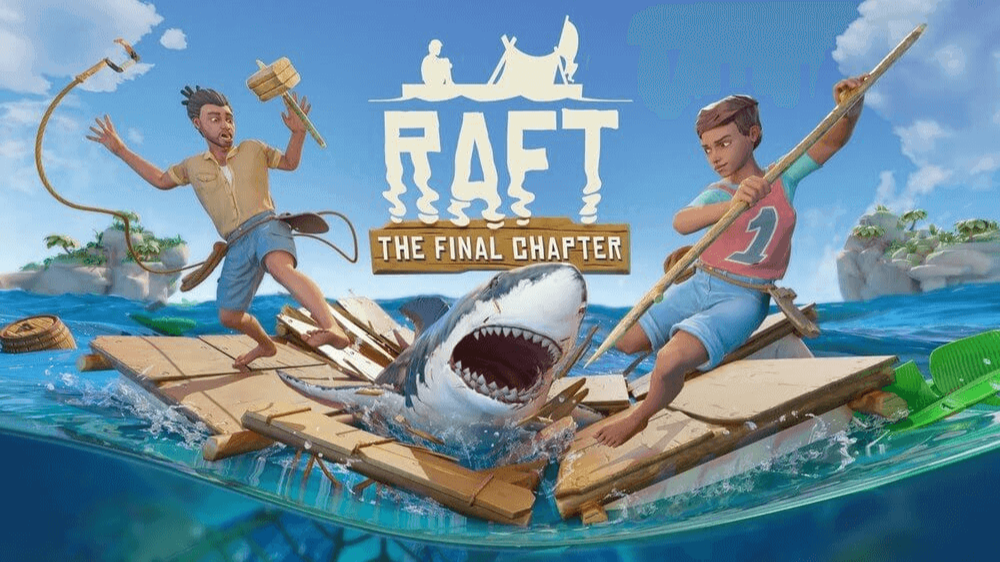
Raft - Survival at its best
There are a great many variations of survival games. The genre has already made players sick to their stomachs. Some of them were original, like Don't Starve and Grounded; some were focused on co-op, like 7 Days to Die and Valheim. At one time the genre became so popular that crooked developers began to parasitize on it. Most survival games kept the player occupied for a dozen or so hours and then were forgotten forever. Only a few knew the secret of a good survival game, and among these few were Redbeet Interactive - three Swedes with the ultimate vision of their game.
Raft is not a new game. For four years, the project has been modified and refined, and only in 2022 did it enter a full-fledged release. And in the release version was the secret...
First impressions are deceptive
Imagine waking up and finding yourself on a rickety two-by-two-square-meter raft. You are surrounded only by water and piles of floating garbage, hungry seagulls are circling overhead, and there is not a soul on the horizon. What do you do?
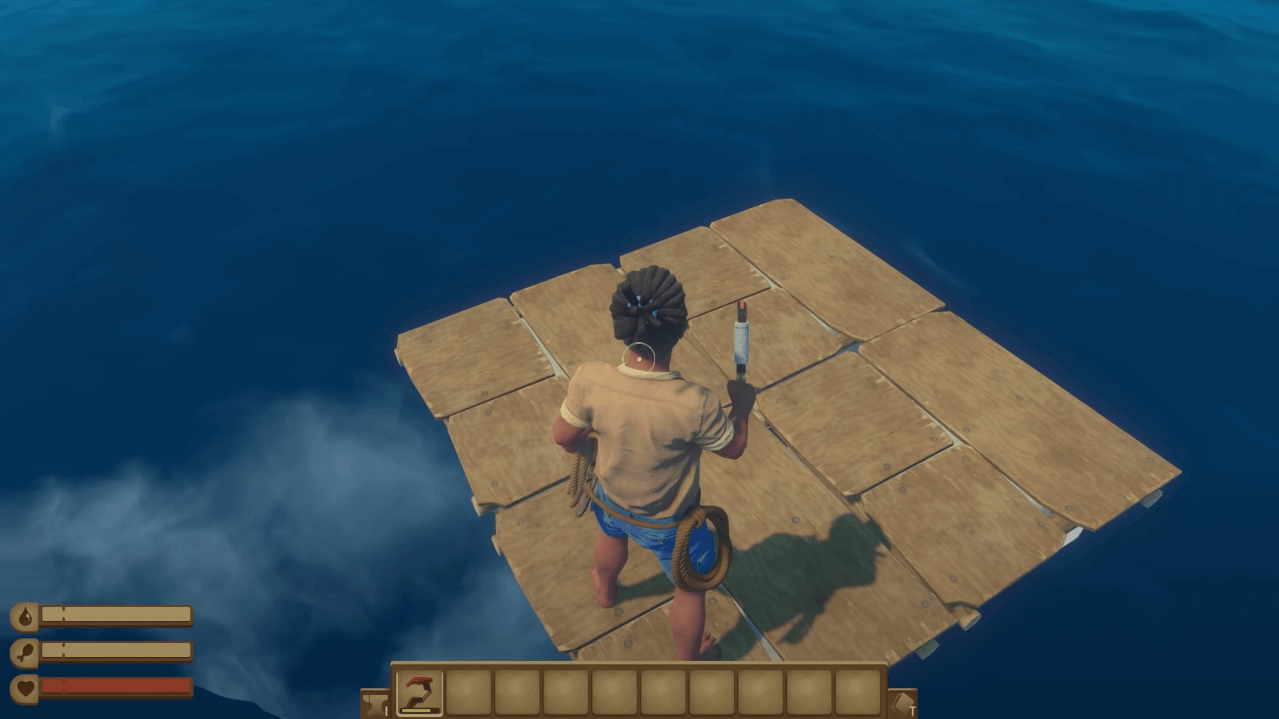
As Raft teaches us, the first thing to do is to fish out the floating garbage. There's bound to be something edible in it, or, at the very least, building materials.
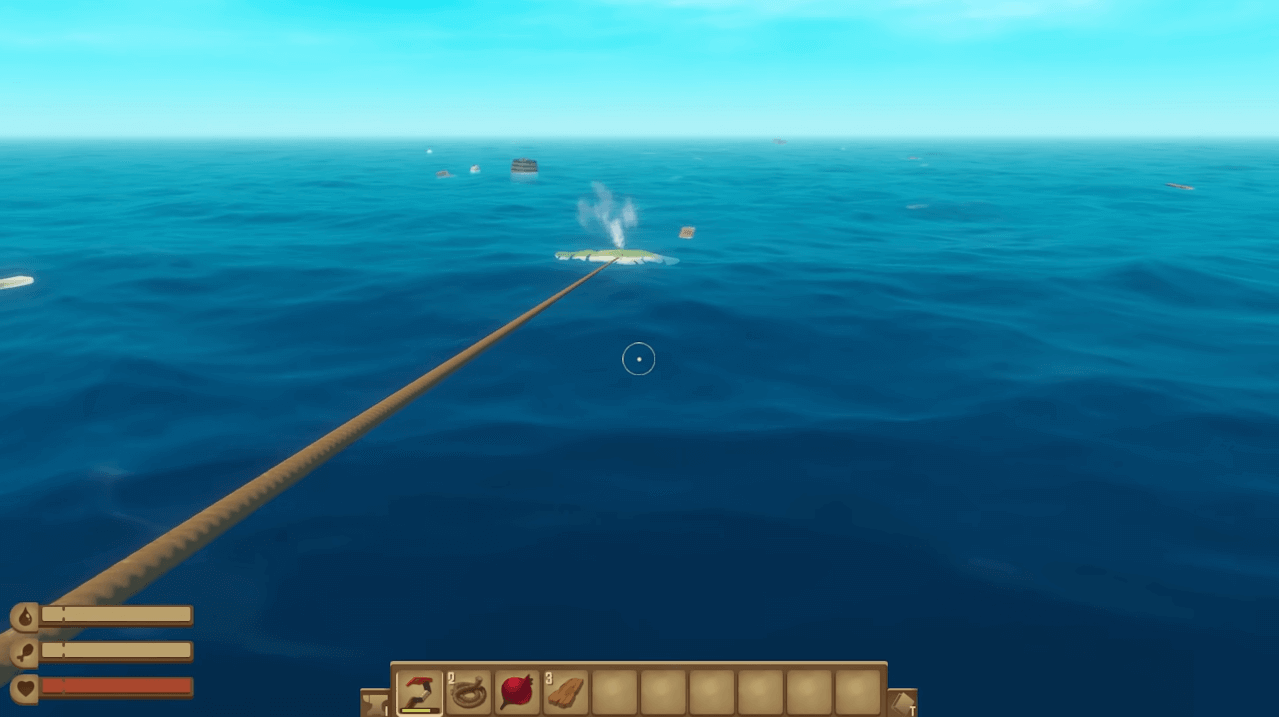
Almost immediately we notice that the debris and the raft are being carried away by the current. Once we fall overboard, the only island of land we risk never seeing again. If in classic survival games the essence of the game has always been to build a base with periodic forays for food and resources, in Raft your base itself drifts through the world, and the starting resources are always under your nose, but chasing them by swimming, you risk losing your base from sight. An unusual rearrangement of the sums in this case does change the sum. How to get food when there is only salt water around? Where to swim and whether it makes sense? Raft puzzles you from the first minutes, replacing the usual whacking of tree trunks with bare fists by simulating fishing...
The first time the game now and then tests your patience, forcing you to pick up trash and fight off uninvited guests:
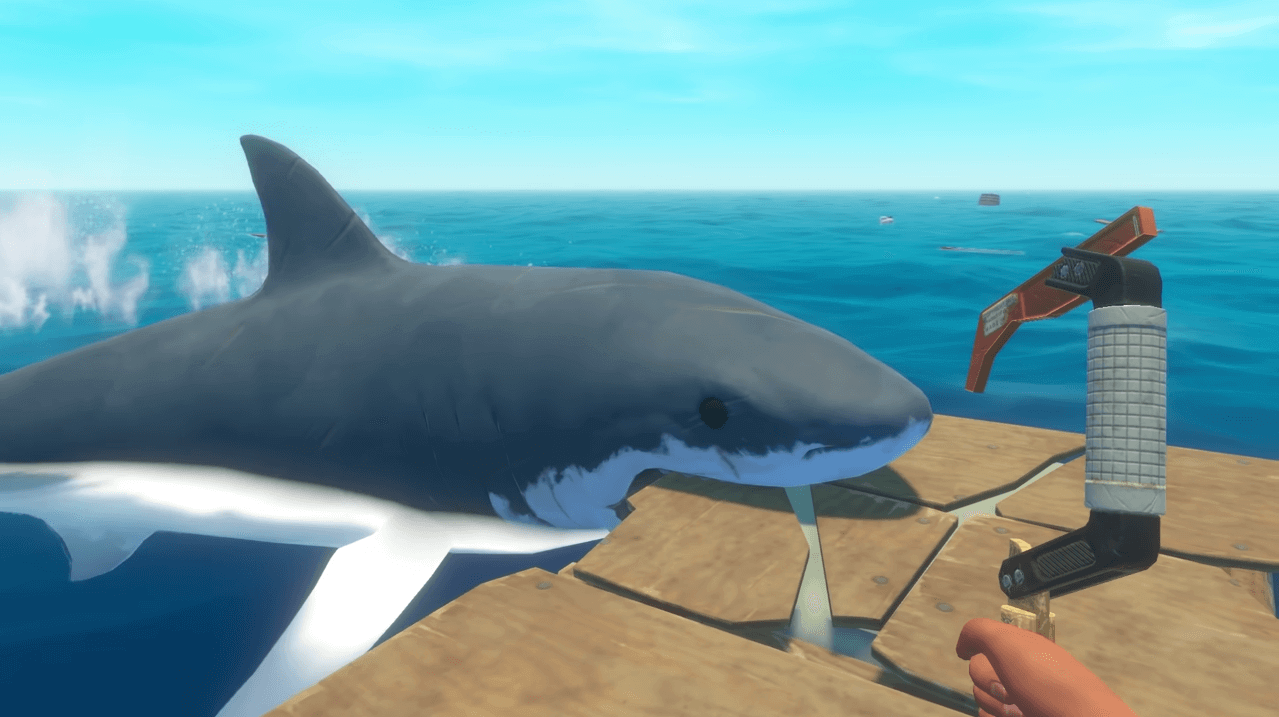
And this is the first time - a real test of willpower. At first Raft is repulsed by the ills of survivalism: the constant scramble to meet the needs of the protagonist a la "eat, drink, chase away the shark, hurt, heal, starve", the constant lack of resources, and in general routine kill. Everything changes with the appearance of the first piece of land on the horizon, the first dry land. It is a pity that not everyone will see the dry land. The first hours are torturous to play, and if you set sail alone, you are unlikely to give the game a second chance to unfold.
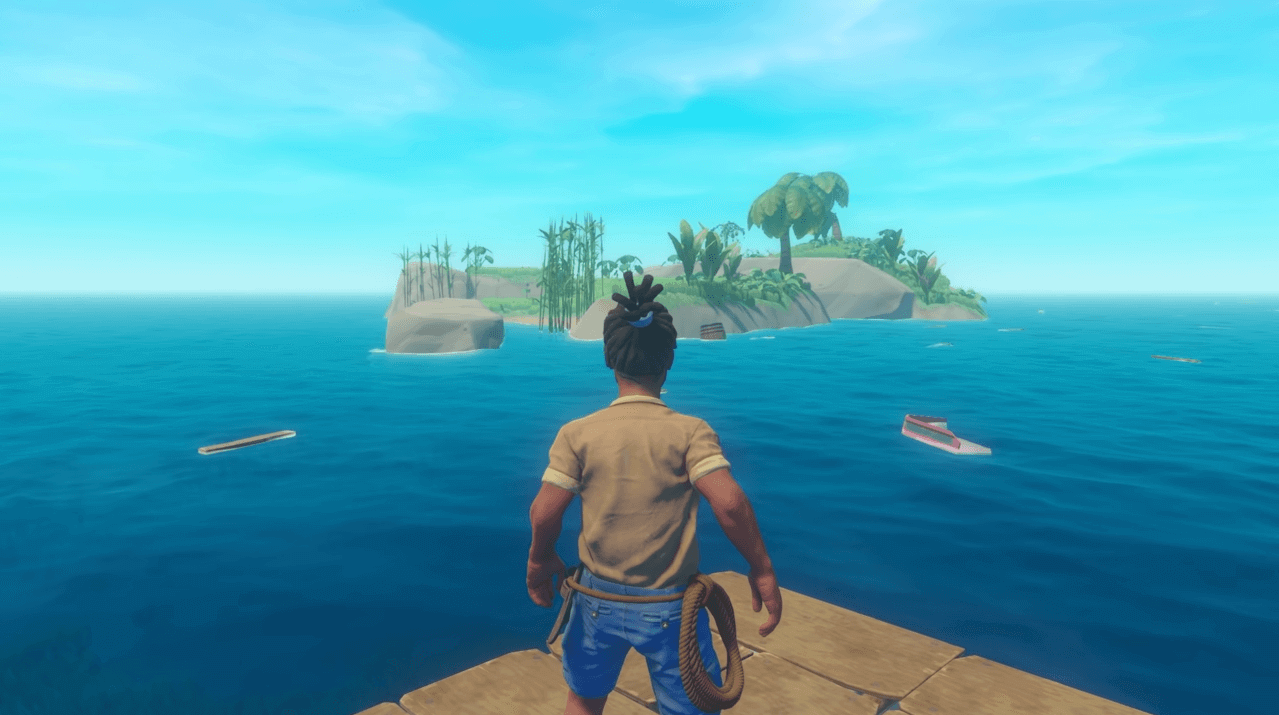
But if you gave Raft a second chance, you are unlikely to regret it...
Your own corner of paradise
After a kind of protracted training Raft becomes what it really is, which is a long-build game with a lot of content and mechanics. Here you are crafting a sail, arming the mast to the deck, and you notice that it turns out that not only the water is dynamic in the game, but also the air. Wishing for tailwind in the sails ceases to be a metaphor: in what direction the wind blows - in what direction the raft sails. But it is worth pointing the sails against the wind, and the ship becomes in place.
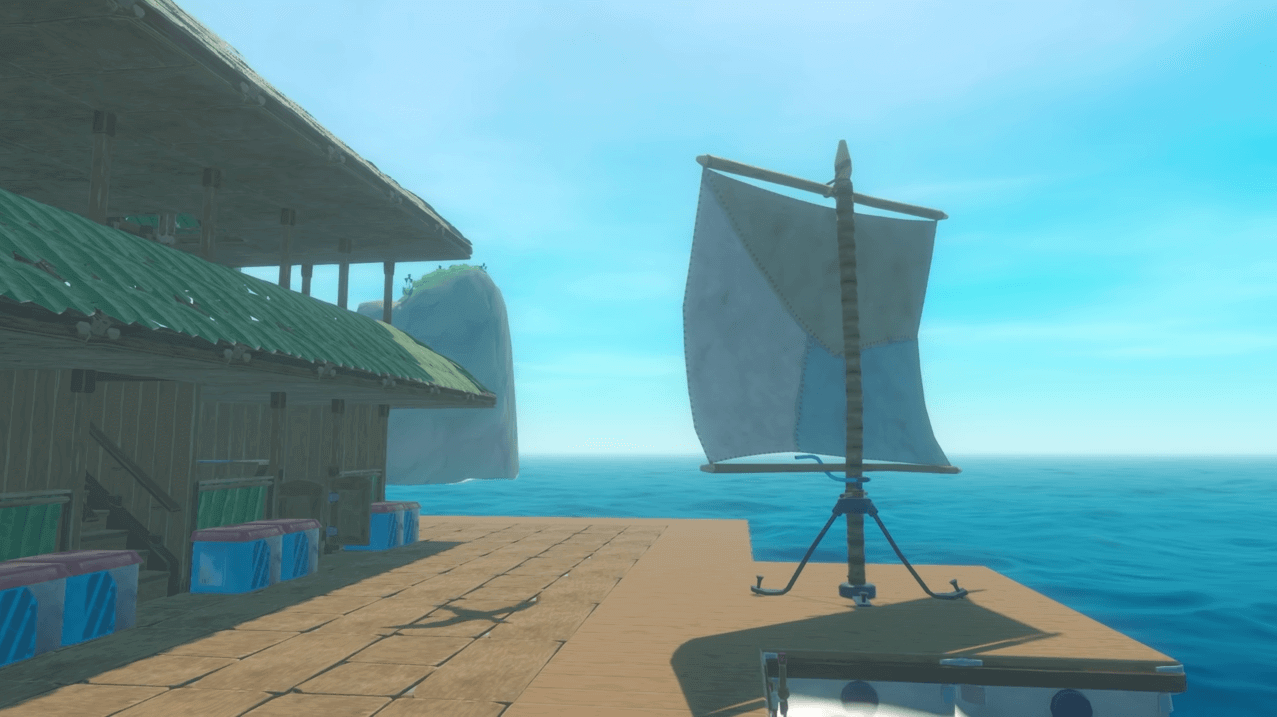
But when you dock at an island and set your sails against the wind, you risk not catching the moment when the wind changes direction and your raft sails away without you. There are no compasses or charts in Raft. Losing your raft in the middle of the water is tantamount to being beaten. To avoid losing your raft during the island foray, you will need an anchor.
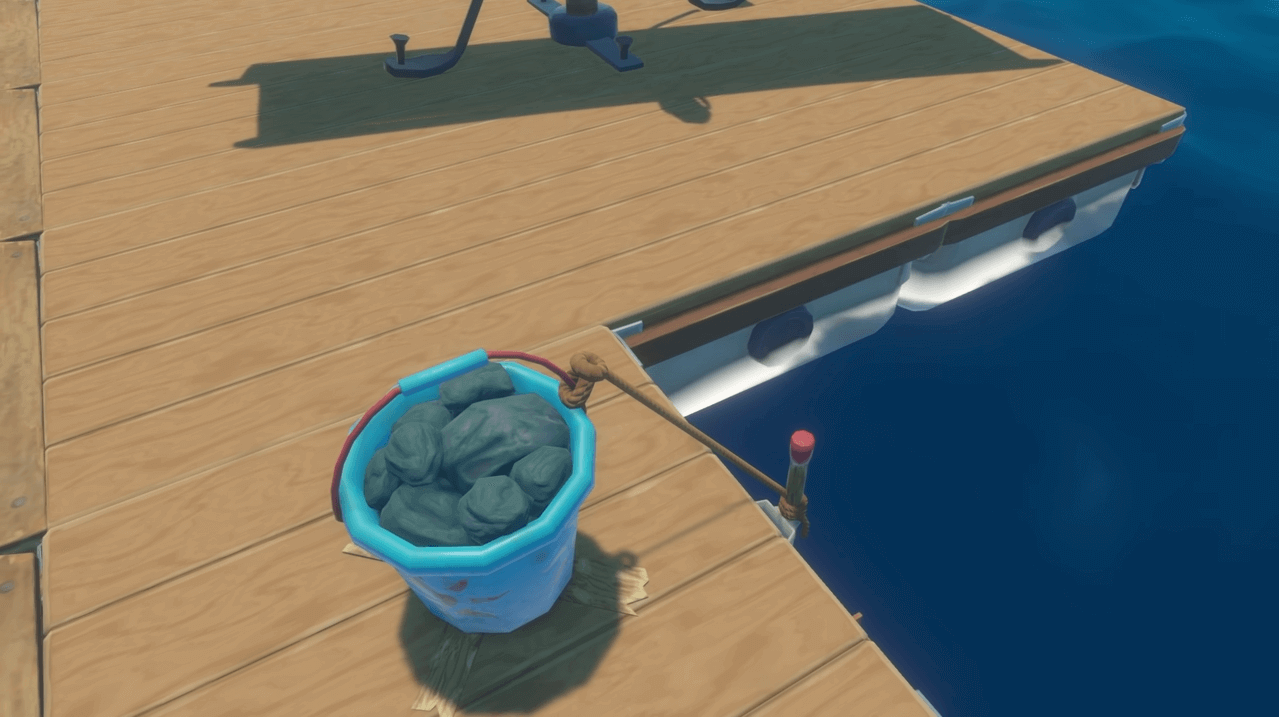
All of the starter items look artisanal and work on their own merit. Every first-level item is a separate reference to the adventures of Robinson Crusoe. The distiller for drinking water alone is worth it:
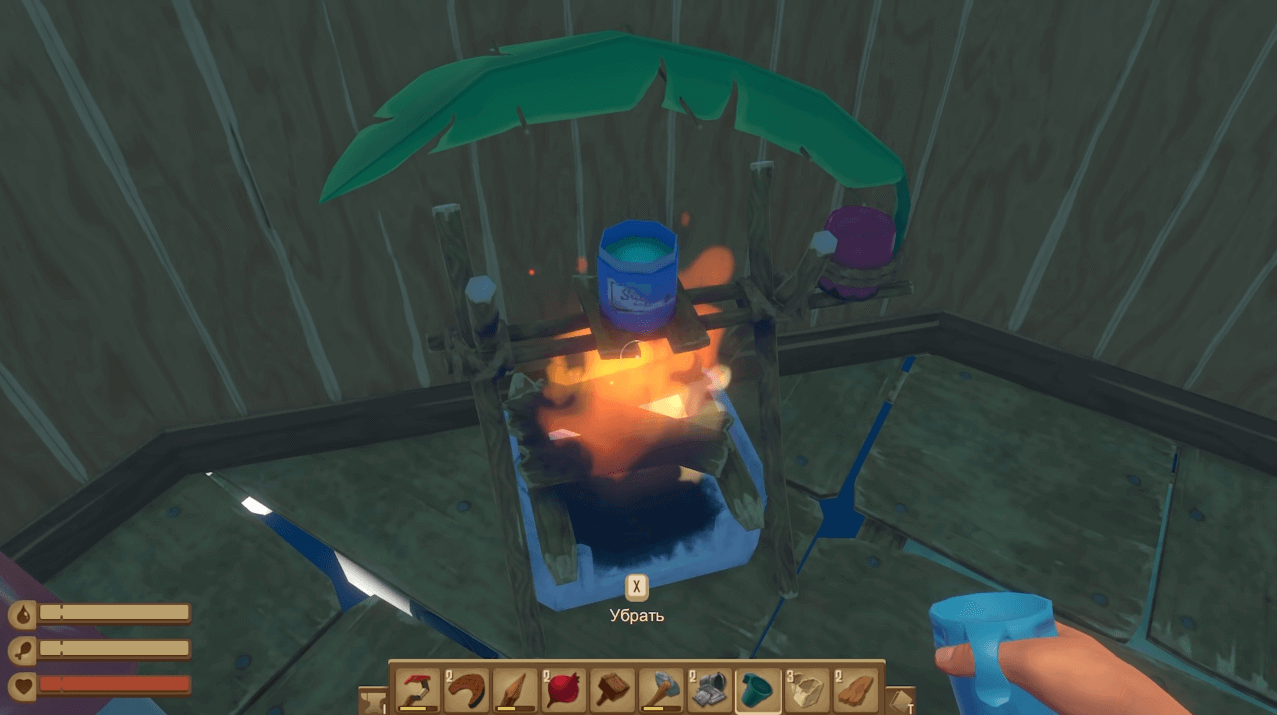
Behind the flow of worries you gradually notice that Raft is much more than it seemed at first glance. Most of the construction lends itself to improvements that fundamentally change the operation of this or that element. You won't get very far on sail power; sooner or later you'll need an engine. Here's one like this:
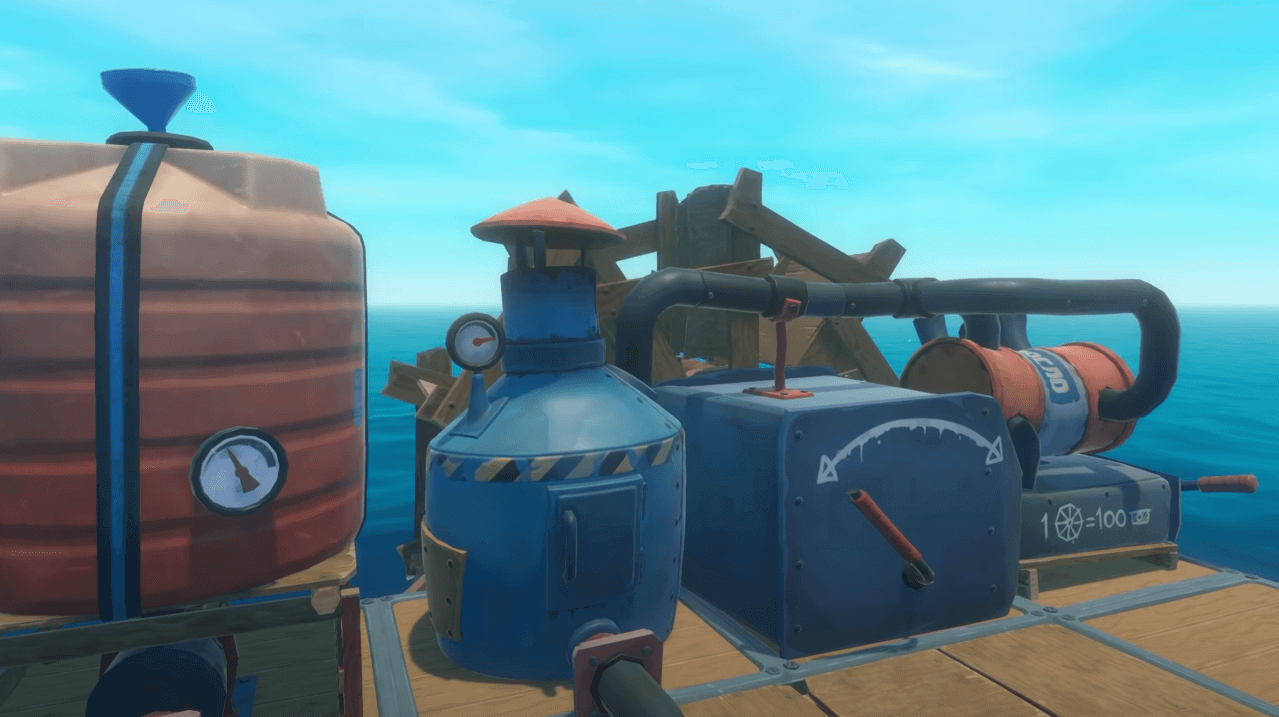
However, no one will tell you that the horsepower of the engine is limited. Over time, more and more buildings will appear on your raft, but there is not one that works on its own and does not require building a side building:
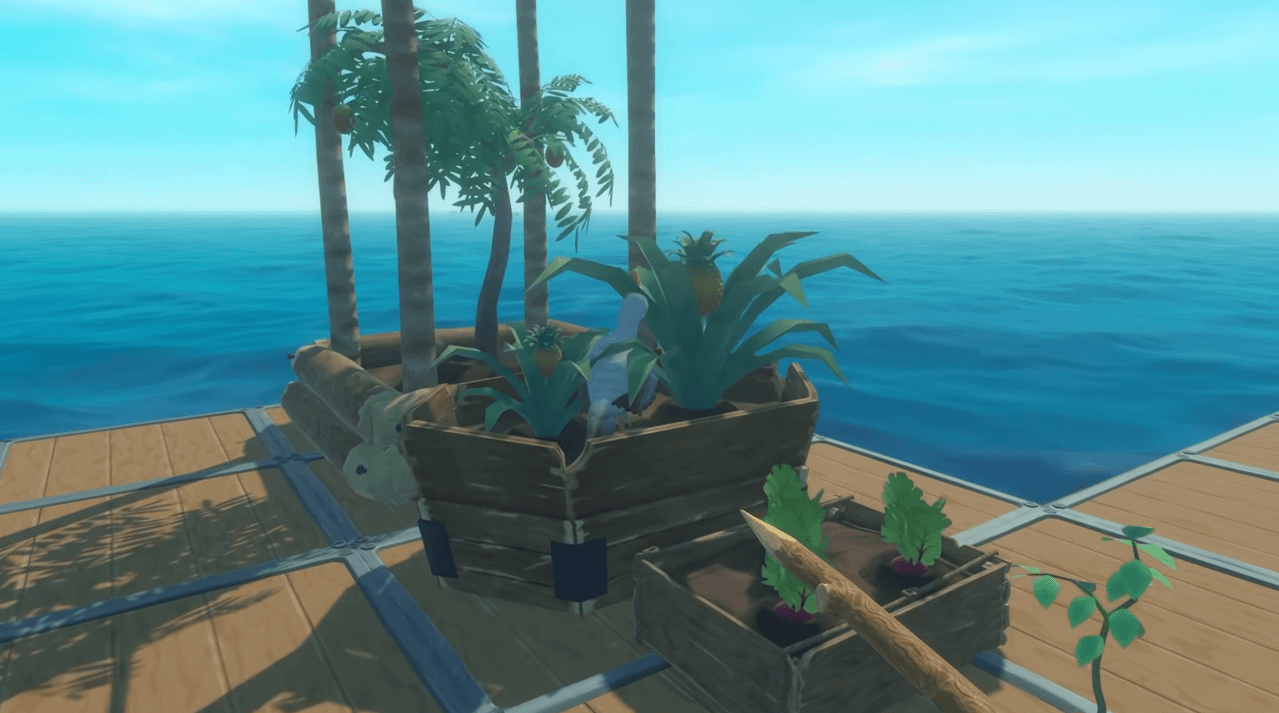
If you are growing vegetables and fruits on the bed, then those seagulls hovering overhead are not a decoration of the game, but a full-fledged mechanic. Seagulls won't be shy about feeding on your potatoes while you're doing your business. Of course, you can build a scarecrow, but the seagulls are so greyhounded that they will break the scarecrow first, and then take over the old one. Although many processes are automated over time, the raft cannot exist without player input. The mechanics of the tide will remind you of repairs, and putting the ship on autopilot is fraught with a swim to the hellhole. Hundreds of chores - all as in the classic squeeze.
For your hard work, Raft rewards you with lots of ways to spruce up your flood shelter. Customizing the raft is something that takes hours. It's just like classic squeezers: you need feathers for the couch, and the feathers are obtained from greyhound seagulls, which you still need to catch. You need paint to paint the couch. Paint is scarce in the open ocean, so we have to make do with the ink of the local fugu fish:
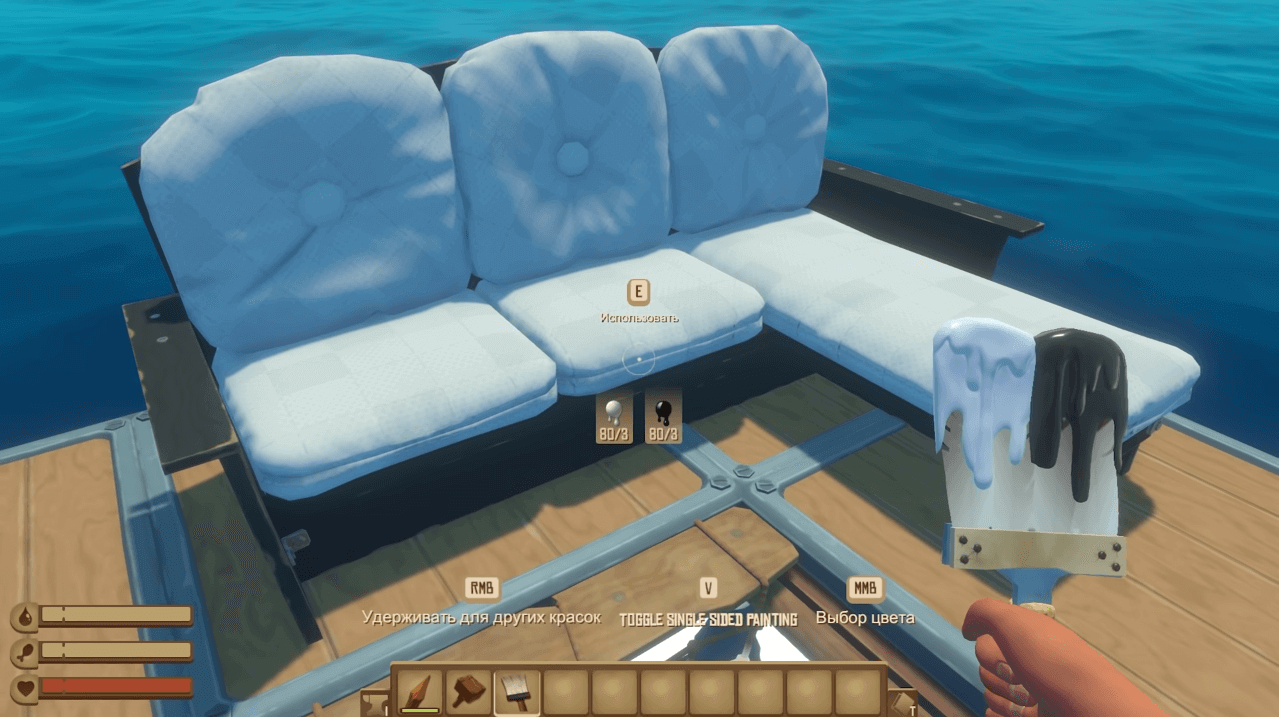
Every single building in Raft is stylized as an islander's handiwork. You can build just about anything, from the already-familiar crates of supplies to your own farm with animals:
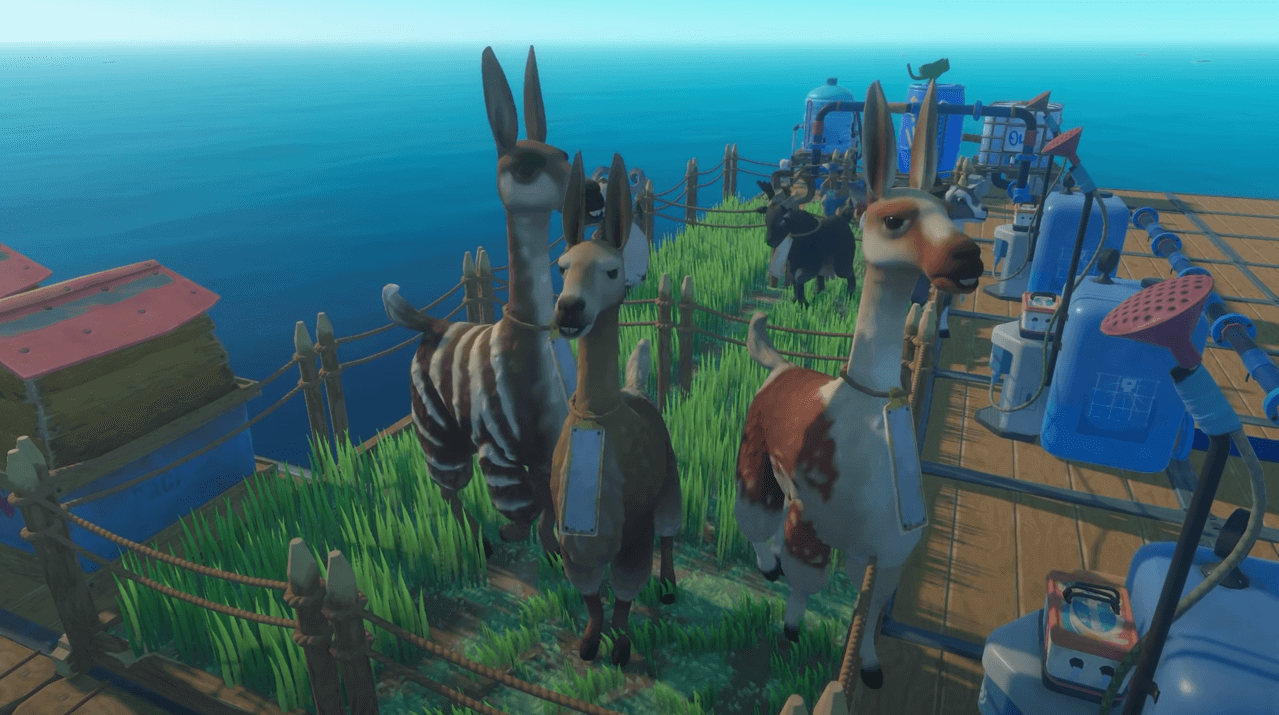
The animals will have to catch them on the islands themselves. You need a cannon that shoots a net. The cannon requires gunpowder...the spindle of sequences is truly immense. Do not get to build a shack from the ground and sticks, crafting here is demanding and meticulous. Originally Raft was a sandbox without a storyline, so the creation of items takes a huge amount of time and effort. All for a week's worth of effort to build this one:
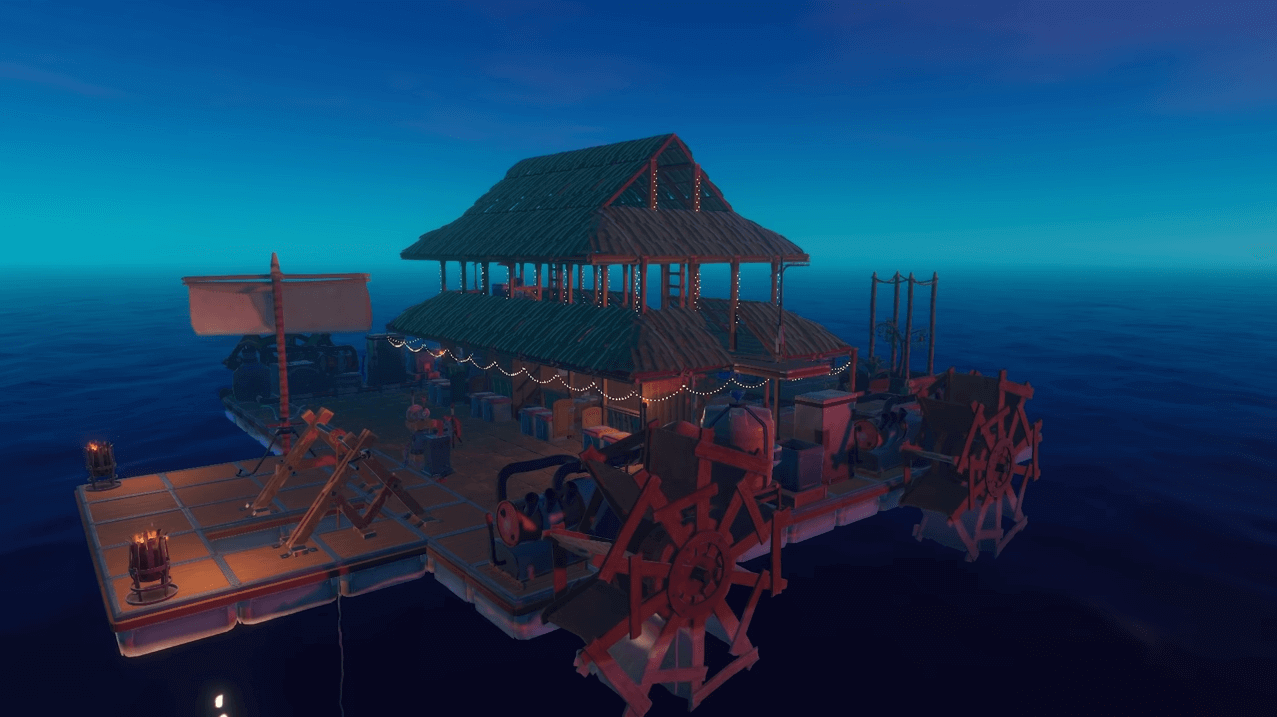
It later developed into this:
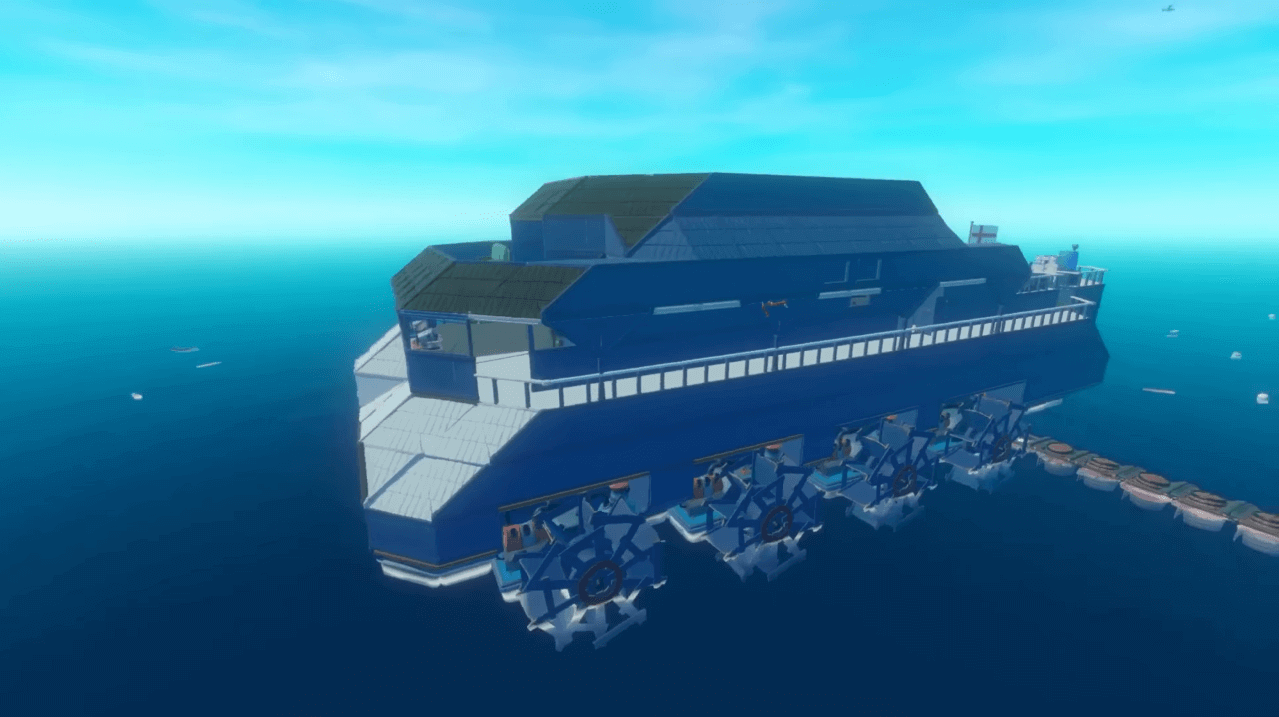
A good game doesn't need a story
But as if this were not enough, there is also a story in Raft. On the islands you will not find a single surviving person, but the echoes of the former civilization are visible to the naked eye. On one of the islands we learn that the local inhabitants died either from a disease of cattle, or from the cattle themselves. On another island, there was some kind of disaster, and at one point we are swept into a whole flooded dome-fenced city. The city of Delight from BioShock on minimal settings has long been abandoned by humans, unlike the robot guards. Robots scurry through the streets, protecting residents who are long gone...
...And it all starts with building a radio station with an antenna:
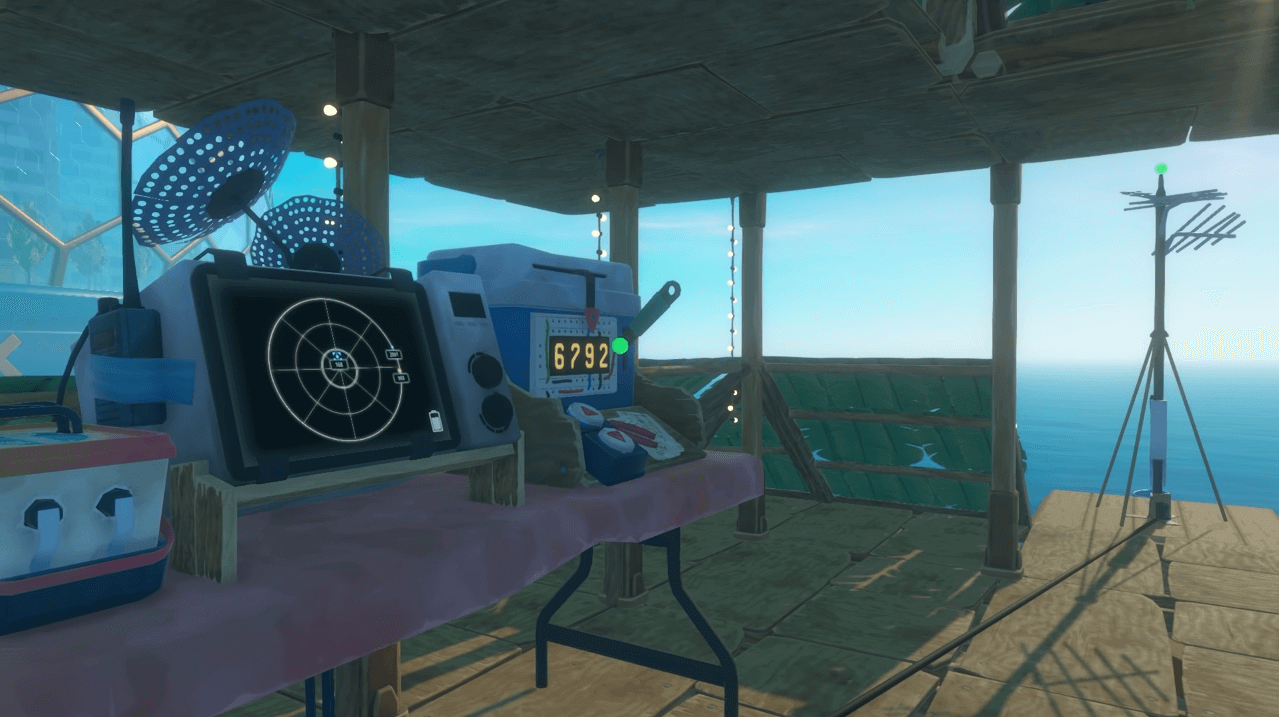
On the radar you can see islands, including story islands. The protagonist writes down in a diary his impressions after each uninhabited settlement. In the same diary entries with the necessary items for the passage are saved:
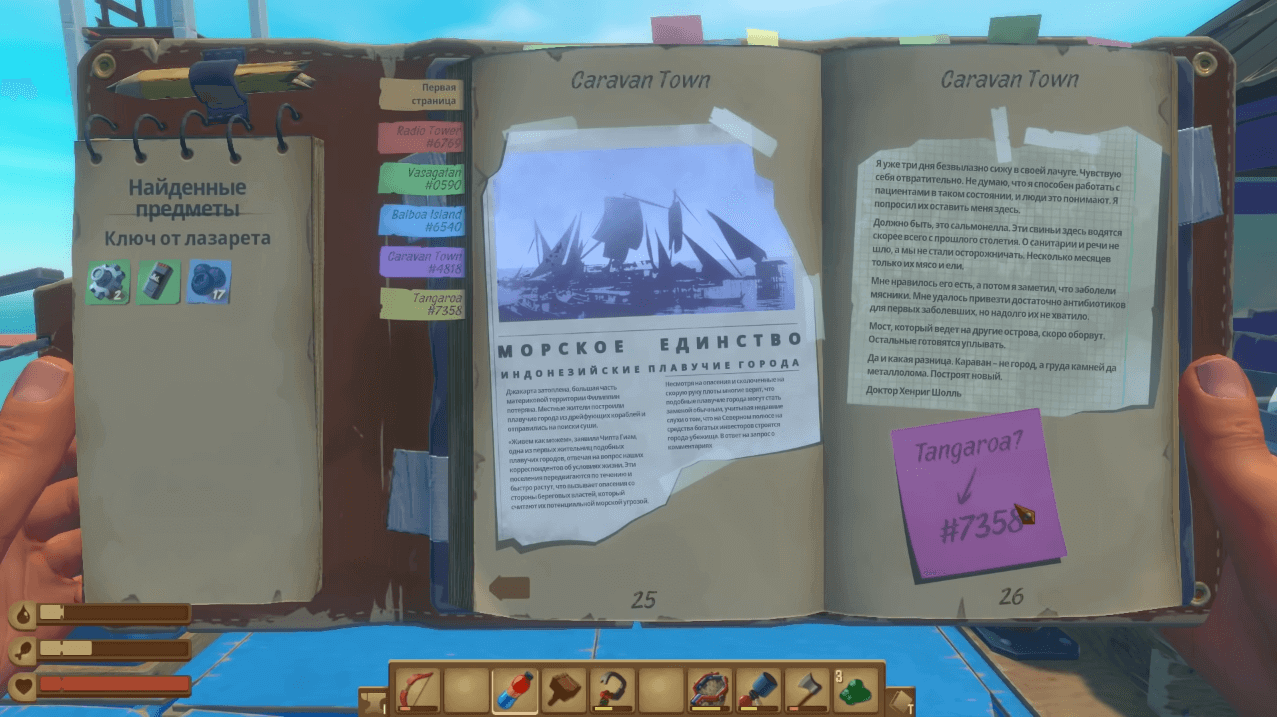
The plot of Raft was lullable, not intriguing, just for show. In Valheim, the plot was much more interesting. But in Valheim itself it's impossible to enjoy the game in isolation from the story campaign: building requires progression through the stories, killing bosses, and when resources are plentiful, Valheim turns into an RPG altogether. Is it possible not to go through the story in Raft and build endlessly? Yes and no. On the one hand, only in story locations you will find blueprints for necessary improvements. On the other hand, in terms of immersiveness on the head above, in the neck of the story does not drive and allows you to plow the ocean to your heart's content.
Is it worth buying Raft?
Raft is an ordinary survival game without any roof-breaking mechanics, creative approaches and crazy realism, but the trick is in another thing - in the elaboration and quantity of these very mechanics. Over 4 years the game has managed to grow such a layer of content that it blows your mind. The game costs about $5 without taking into account the discount. For fans of the genre this price tag is very attractive.
